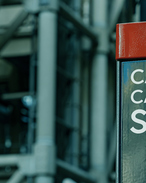This article is 19 years old. Images might not display.
ChevronTexaco now has 50% (formerly 4/7 share), with ExxonMobil (previously 2/7 share) and Shell Australia (previously 1/7 share) now having 25% each. BP, which has a minority interest in the Io field, has not joined the agreement which covered 11 gas fields in the Greater Gorgon area.
The massive Janz gas discovery (ExxonMobil and ChevronTexaco 50% each) is the biggest single field in the Greater Gorgon area.
“We want the opportunity to be able to market 40 trillion cubic feet of gas (tcf),” said a ChevronTexaco spokesman. But he was unable however to confirm whether the framework agreement was binding or not.
(Iron ore player Fortescue Metals Group is in the midst of a controversy with its Chinese customers as to whether some of its offtake framework agreements are legally binding, and have any validity.)
While the spokesman did not mention the FMG project by name, he emphasised this was an agreement between partners and not customers as in the FMG case.
“As you would understand, we have been working on this agreement for some time, way before that [the FMG controversy] became an issue," he told EnergyReview.net.
BP Australia has not joined the Greater Gorgon agreement, even though it is a partner in Greater Gorgon titles WA-22R, WA-23R, WA-24R, WA-25R and WA-26R. The spokesman would not be drawn as to the reason behind BP’s non-involvement but he did say the partners were having discussions with BP.
One benefit of the agreement is that minor parties such as BP could be bought out more effectively. Woodside has a 2% interest in one permit near the southern extent of the project.
An ExxonMobil statement said the government permitting and approvals process for the Gorgon development was on track and the front-end engineering and design (FEED) phase was expected to begin this year.
The partners were currently progressing environmental approval for the LNG and domestic gas project facilities on Barrow Island, according to ExxonMobil.






















